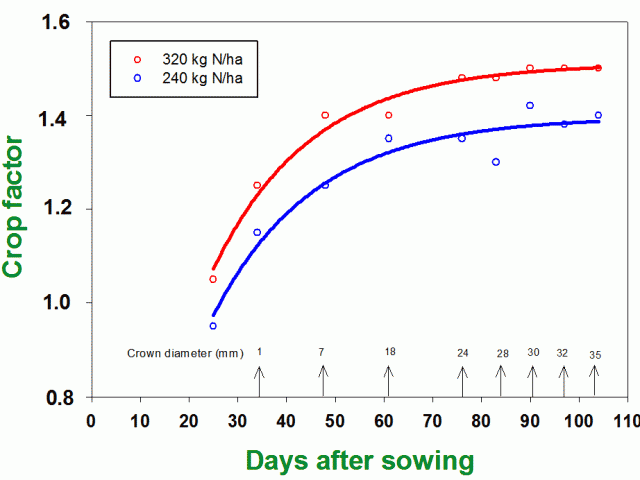Water quality
Carrots are relatively salt-sensitive, along with lettuce, onions and strawberries.
Ideally, water quality should be below 1.0 deciSiemens per metre or 550mg/L total dissolved salts (TDS). On sandy soils and with frequent irrigation, higher salt levels would be tolerated without yield penalty because soil is not drying seriously between irrigations and it is easy to leach salts below the root zone.
In Western Australia, carrots are irrigated with water generally from 400-800mg/L TDS. In hot weather, germination has reportedly been reduced with irrigation water above 1400mg/L TDS.
The impact of irrigation water quality on carrot yield and quality has not been studied in Australia. It is likely that in some areas yield is reduced by salt in irrigation water but the impact will depend on climate, soil type and irrigation management. Apply additional water to leach salt where water quality is marginal.
Water quantity
Carrots can tolerate dry conditions however moisture stress needs to be avoided to produce high yield and quality. In Australia, carrots are irrigated from groundwater, rivers and dams generally via overhead sprinklers and centre-pivots.
On loamy soils near-mature carrots are irrigated to apply close to evaporation replacement, while on coarse sandy soils up to 1.3-1.4 times evaporation is required once full leaf canopy has developed.
Table 1 shows the average water requirement for a Stefano crop growing in coarse sand near Perth, Western Australia.
| Planting date | Predicted harvest date | Estimated water requirement (mm) |
|---|---|---|
| 1-Jan | 26-Apr | 971 |
| 22-Jan | 25-May | 823 |
| 12-Feb | 25-Jun | 671 |
| 4-Mar | 26-Jul | 549 |
| 25-Mar | 26-Aug | 486 |
| 15-Apr | 23-Sep | 487 |
| 6-May | 17-Oct | 551 |
| 27-May | 8-Nov | 660 |
| 8-Jul | 9-Dec | 870 |
| 29-Jul | 21-Dec | 948 |
| 19-Aug | 1-Jan | 1007 |
| 9-Sep | 12-Jan | 1050 |
| 30-Sep | 24-Jan | 1081 |
| 21-Oct | 8-Feb | 1099 |
| 11-Nov | 26-Feb | 1103 |
| 2-Dec | 20-Mar | 1088 |

